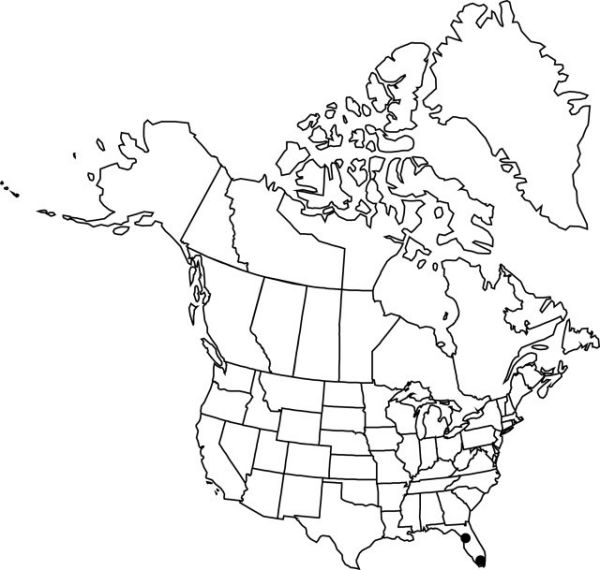Difference between revisions of "Cyclopogon elatus"
Repert. Spec. Nov. Regni Veg. Beih. 8: 53. 1919.
FNA>Volume Importer |
imported>Volume Importer |
||
| Line 64: | Line 64: | ||
|publication year=1919 | |publication year=1919 | ||
|special status= | |special status= | ||
| − | |source xml=https:// | + | |source xml=https://bibilujan@bitbucket.org/aafc-mbb/fna-data-curation.git/src/bb6b7e3a7de7d3b7888a1ad48c7fd8f5c722d8d6/coarse_grained_fna_xml/V26/V26_1062.xml |
|subfamily=Orchidaceae subfam. Orchidoideae | |subfamily=Orchidaceae subfam. Orchidoideae | ||
|tribe=Orchidaceae tribe Cranichideae | |tribe=Orchidaceae tribe Cranichideae | ||
Revision as of 22:12, 27 May 2020
Herbs to 75 cm. Roots fusiform-cylindric, 13 cm × 3–10 mm. Leaves 2–6; petiole erect, 3–10 cm; blade green abaxially and adaxially, narrowly to broadly elliptic, or elliptic-lanceolate, 3.7–13 × 1.6–6.4 cm, apex obtuse to acute-acuminate. Inflorescences immaculate, green to greenish brown; scape to 57 cm × 1–5 mm, glabrous or sparsely pubescent; racemes 7–50-flowered, 7–23 cm, pubescent; floral bracts erect, immaculate or minutely speckled, lanceolate, 8–19 mm. Flowers green to coppery brown, sometimes purplish, tubular-funnelform; sepals basally connate for 0.1 mm, abaxially pubescent; dorsal sepal elliptic-lanceolate, 4.5–7 × 1.5–2 mm, apex acuminate; lateral sepals slightly sinuate-falcate, narrowly oblong, 5–7.5 × 1–2 mm; petals linear to narrowly spatulate, 4–6.5 × 0.5–0.75 mm, glabrous; lip white, canaliculate, pandurate to oblong-ovate, then constricted distal to middle, distal portion flabellate to reniform, usually broadest, or distal and proximal portions equal in width, 5–7 × 2–4 mm, base laterally thickened, with or without pair of tubercles, margins entire or crenulate; column slender, 3.5–4.5 mm; pollinia yellow. Capsules erect-spreading, ellipsoid, 6–12 × 4–6 mm. 2n = 28, 30, 45.
Phenology: Flowering Feb–Mar.
Habitat: In humus of moist, rocky hammocks
Elevation: 0–20 m
Distribution

Fla., Mexico, West Indies, Central America, n South America.
Discussion
Morphologic variation is substantial in Cyclopogon elatus. Variants may be sympatric and locally distinct (J. D. Ackerman 1995), or they may form a continuous series within or among regions. I suspect that inbreeding (via self-pollination) is prevalent and has generated and maintained local variation.
Selected References
None.